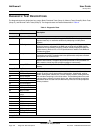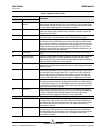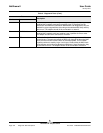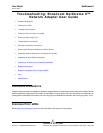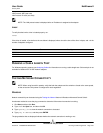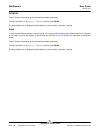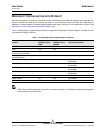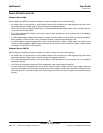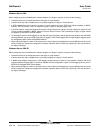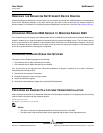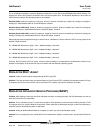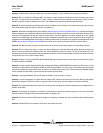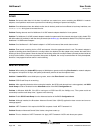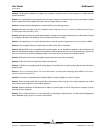
NetXtreme II User Guide
January 2010
Broadcom Corporation
Page 242 Microsoft Virtualization with Hyper-V Document ENGSRVT52-CDUM100-R
Windows Server 2008
When configuring a team of NetXtreme II network adapters on a Hyper-V system, be aware of the following:
• Create the team prior to binding the team to the Hyper-V virtual network.
• Create a team only with an adapter that is not already assigned to a Hyper-V virtual network.
• A TOE-enabled team that is bound to a Hyper-V virtual network will report TOE as an offload capability in BACS;
however, TOE will not work. This is a limitation of Hyper-V. Hyper-V does not support TOE.
• In an IPv6 network, a team that supports CO and/or LSO and is bound to a Hyper-V virtual network will report CO and
LSO as an offload capability in BACS; however, CO and LSO will not work. This is a limitation of Hyper-V. Hyper-V does
not support CO and LSO in an IPv6 network.
• To successfully perform VLAN tagging for both the host (parent partition) and the guest (child partition) with the BASP
teaming software, you must configure the team for tagging. Unlike VLAN tagging with a single adapter, tagging cannot
be managed by Hyper-V when using BASP software.
• When making changes to a team or removing a team, remove the team’s binding from all guest OSs that use any of the
VNICs in the team, change the configuration, and then rebind the team’s VNICs to the guest OS. This can be done in
the Hyper-V Manager.
Windows Server 2008 R2
When configuring a team of NetXtreme II network adapters on a Hyper-V system, be aware of the following:
• Create the team prior to binding the team to the Hyper-V virtual network.
• Create a team only with an adapter that is not already assigned to a Hyper-V virtual network.
• A BASP virtual adapter configured for VLAN tagging can be bound to a Hyper-V virtual network. However, the VLAN
tagging capability through Hyper-V cannot be enabled with this configuration. Hyper-V VLAN tagging will only work if
bound to an untagged BASP virtual adapter.
• When making changes to a team or removing a team, remove the team’s binding from all guest OSs that use any of the
VNICs in the team, change the configuration, and then rebind the team’s VNICs to the guest OS. This can be done in
the Hyper-V Manager.



